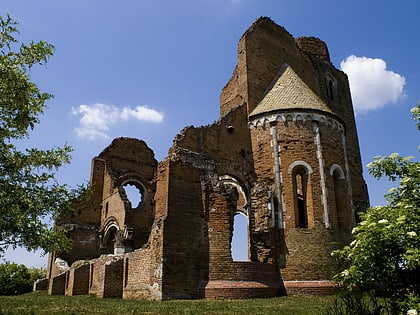Arača


Facts and practical information
Nestled in the serene landscapes of Vojvodina, Serbia, the ruins of Arača stand as a testament to the passage of time and the rich tapestry of history that has swept through this region. Arača was once a grand Romanesque church, which is believed to have been built in the early 13th century, around 1230. This historical gem, now a ruin, whispers tales of the past to those who wander through its remaining arches and walls.
The church was originally dedicated to St. Nicholas and served as part of a Benedictine monastery. Throughout its existence, Arača has witnessed numerous events that have led to its current state of decay. It suffered significant damage during a Tatar invasion in the 13th century and was rebuilt only to be destroyed again. The repeated cycle of destruction and repair is a running theme in the history of this site. By the 18th century, it had been abandoned and left to face the elements.
Despite its dilapidated state, the ruin of Arača is a significant cultural and historical monument. Its partial walls and the remnants of its apse still exhibit the architectural features of the Romanesque style, with semi-circular arches and robust stonework. The site is particularly notable for the traces of medieval frescoes that once adorned the church's interior walls, offering a faint reflection of its former glory.
Today, Arača stands isolated amidst the fields, attracting visitors who are drawn to its quiet beauty and the echoes of its storied past. It is a destination for those who appreciate the melancholic charm of ruins and the stories they carry within their weathered stones. Although it is not as bustling with tourists as other historical sites in Serbia, Arača offers a unique, introspective experience for those who seek to connect with the bygone eras of this region's complex history.
